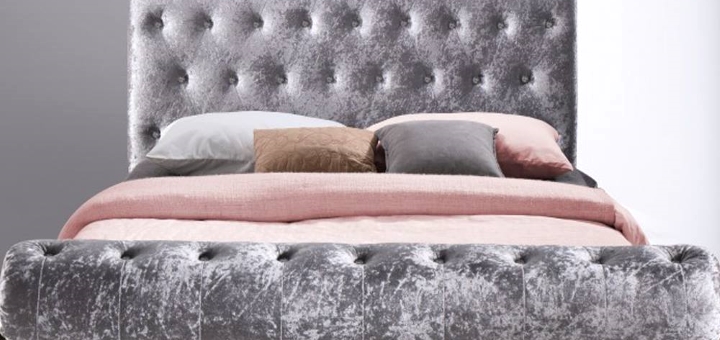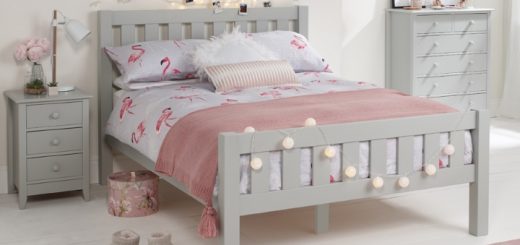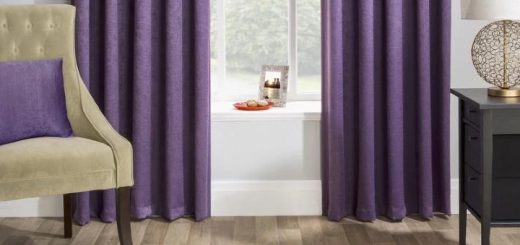Nine things to consider when buying a bed

Most people spend roughly one third of their lives in bed. This accounts for the six to eight hours we sleep every night, plus naps and other activities, like reading, watching TV, and so on.
Choosing the right bed can be a difficult task. If you’ve been having difficulty sleeping or you have back pains when you wake up, it might be because your bed is unsuitable for your needs.
Drawing from advice from the UK’s Sleep Council, below we have put together nine things to consider when buying a new bed.
1. Signs that you might need a new bed
A comfortable bed and a good mattress are the foundation of a good night’s sleep. A deteriorating bed or mattress could end up taking off more than an hour of your sleep. Unfortunately, this happens over a long period of time, so not a lot of people make this connection.
Every bed has a limited lifespan due to constant use. Remember, you’re reading, watching TV, sleeping, and doing other activities in your bed on a regular basis, and this use will show in five to seven years.
So, the questions you should ask yourself in order to determine if you need a new bed are:
- Am I sleeping as well as I did last year?
- Does my back hurt when I wake up?
- Have I slept better in other beds?
If you’ve answered “Yes” to more than one of these questions, chances are you need a new bed.
2. Choosing your new bed
There are three aspects that you need to consider before buying a bed: type, price, and size:
- Type – do you like the style of your current bed? Is it the right height? Beds differ in many aspects. If you’re happy with the style, that’s great, but if you’re not, don’t be afraid to explore the alternative options that are available.
- Price – don’t pick the cheapest bed you can find. Similarly, don’t necessarily pick the most expensive one either – you want to look for the bed that gives you the best quality for your money.
- Size – this consideration is equally as important as type and price, and your new bed should be adequate in size. If you and your partner can lie down, hands behind your heads, with your elbows stretched behind your head and not touch, it’s the perfect size.
3. Testing before you buy
Never settle for the first option. Buying a new bed requires a lot of testing, and just like you wouldn’t buy a new car without driving it first, you shouldn’t buy a new bed without lying on it.
Remember that comfort is a subjective issue. If you’re buying a bed for two people, make sure you both test it beforehand.
4. Mattress choices
Most mattresses look very similar, but don’t be fooled by the looks – mattresses vary wildly depending on the material, the stitching, the interior springs, and so on.
Don’t just go for good-looking mattresses, go for those that are practical. Remember that you’ll probably have the mattress covered at all times by a bed sheet, so the looks aren’t really that important.
5. Different types of bed base
The base of the bed is just as important as the mattress. These are two of the most popular types of bed base that you can choose from:
- Slatted – these are most commonly found with bedsteads. The slats can be either rigid or flexible, depending on the material used. A larger gap between slats means a lower lifespan for your mattress.
- Divans – these are basically an upholstered box designed to hold the mattress, and have a storage space underneath. They can be either sprung edged, solid, or firm edged.
6. Bedsteads, adjustable bases, bunks, and headboards
- Headboards offer a simple yet effective way to increase the coziness of your bed and bedroom. The different materials and designs mean that you’ll have plenty of options to choose from.
- Bedsteads are mostly imported from other countries, and offer a simple solution to holding your mattress. Make sure you test your mattress on the bedstead you want to buy.
- Adjustable bases are, technically, the most comfortable solution, where the bed and mattress adjust according to your needs. The only downside is that you need to buy the base and the mattress together.
- Bunk beds are probably the most popular choice for children, and are especially useful if you’re trying to save space in a room.
7. Pillow choices
Choosing the right pillow is equally important as choosing the right bed and mattress.
Often, pillows are the culprit for morning neck and shoulder pain, and they should be able to hold your head in an anatomical position. Pillows should be changed as soon as they lose their height, or every two to three years.
8. Overlays and toppers
Toppers are usually used to soften the feel of a rigid mattress. They’re not for everyone, so testing them beforehand is crucial.
Indeed, some people need a more rigid mattress than others, meaning a topper that softens that feel is exactly what those people don’t need on their bed.
9. Looking after your bed
You have to take care of your bed and mattress if you want to prolong their lifet. In order to do so, simply follow these tips:
- Don’t bend the mattress
- Let the mattress breathe
- Turn your mattress regularly
- Cover the mattress with a protector.
What factors did you consider when buying your latest bed? Share your tips and comments with us below.








